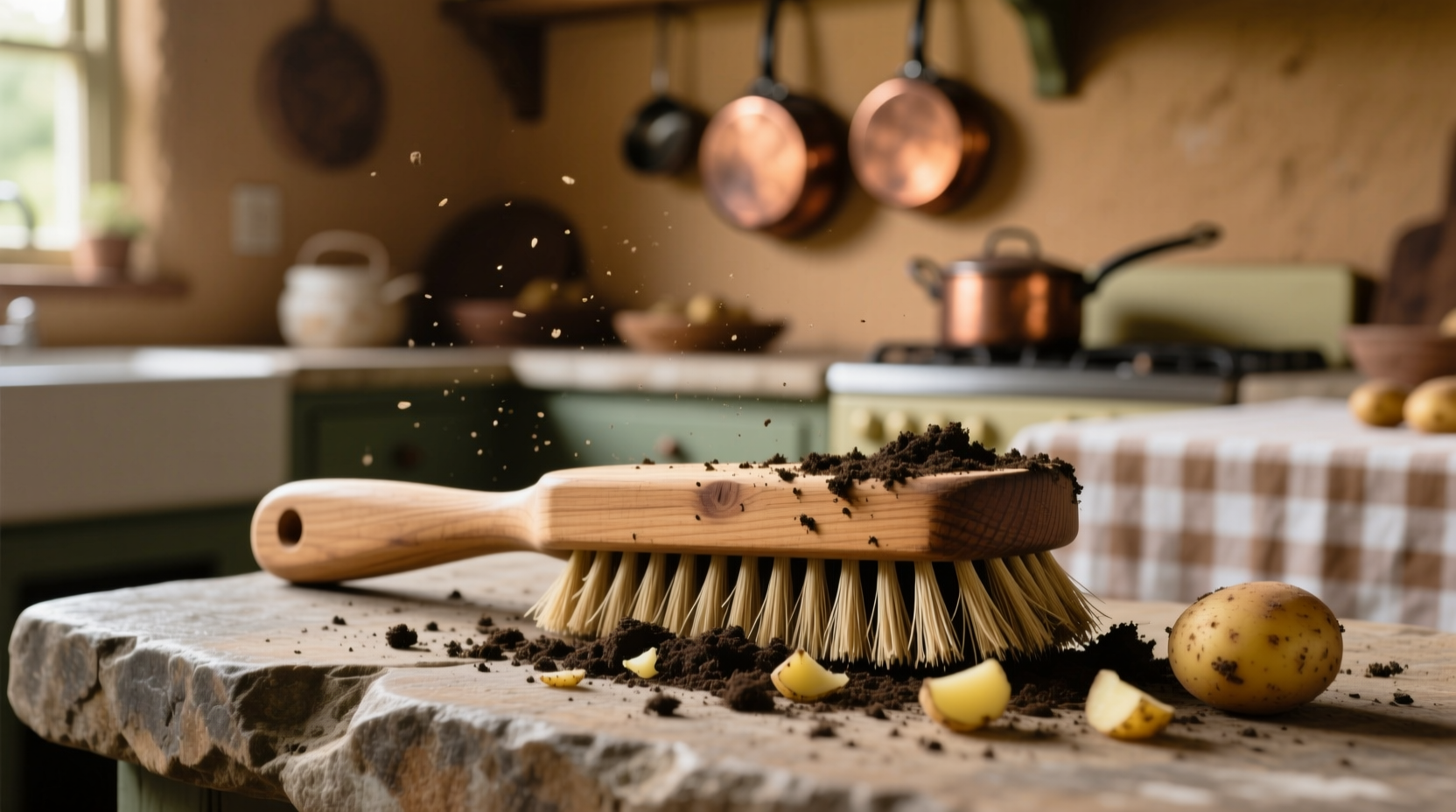If you're looking for the most effective way to clean potatoes while preserving their skin and nutrients, a potato brush is your ideal kitchen tool. This specialized scrubbing brush removes dirt and debris without damaging the potato's surface, making it superior to hands or generic sponges for thorough yet gentle cleaning.
Why Your Potato Cleaning Method Matters More Than You Think
Proper potato preparation starts long before cooking. According to USDA food safety guidelines, potatoes rank among the top vegetables requiring careful cleaning due to their soil-grown nature and potential for harboring bacteria like Salmonella and E. coli. A dedicated potato brush addresses this concern while maintaining the vegetable's integrity better than alternative methods.
The Evolution of Vegetable Cleaning: From Hands to Specialized Tools
Understanding how we've arrived at today's specialized cleaning tools provides context for why potato brushes have become kitchen essentials:
| Era | Primary Cleaning Method | Limitations |
|---|---|---|
| Pre-1900s | Hand scrubbing with coarse cloths | Inconsistent cleaning, high risk of skin damage |
| Early 1900s | Basic vegetable brushes with wood handles | Limited durability, difficult to sanitize |
| Mid-1900s | Plastic-handled brushes with synthetic bristles | Environmental concerns, less effective on stubborn dirt |
| Modern Day | Eco-friendly materials with specialized bristle patterns | Requires proper technique for optimal results |
How Potato Brushes Outperform Alternative Cleaning Methods
While some home cooks rely on hands, generic sponges, or even peelers for potato preparation, specialized brushes offer distinct advantages:
- Preserves nutrients - Potato skins contain significant fiber and potassium; gentle brushing maintains these benefits unlike peeling
- Removes embedded dirt - The angled bristles reach into crevices where soil accumulates
- Reduces bacterial risk - Proper scrubbing removes up to 98% of surface contaminants according to FDA food handling studies
- Extends shelf life - Gentle cleaning prevents micro-tears that accelerate spoilage

Selecting the Right Potato Brush for Your Kitchen Needs
Not all potato brushes serve the same purpose. Consider these factors when choosing your ideal tool:
Natural vs. Synthetic Bristles: A Practical Comparison
| Feature | Natural Fiber Brushes | Synthetic Fiber Brushes |
|---|---|---|
| Material | Agave, coconut, or tampico fibers | Nylon or polypropylene |
| Eco-impact | Biodegradable, sustainable sourcing | Plastic-based, less environmentally friendly |
| Cleaning power | Gentle yet effective on most potatoes | More aggressive scrubbing capability |
| Lifespan | 6-12 months with proper care | 12-24 months |
| Best for | Organic produce, delicate varieties | Root vegetables with heavy soil |
Mastering Proper Potato Brush Technique: A Step-by-Step Guide
Using a potato brush effectively requires more than just scrubbing motions. Follow these professional chef-recommended steps:
- Pre-rinse potatoes under cool running water to remove loose soil
- Hold the brush at a 45-degree angle to maximize bristle contact with the potato surface
- Apply moderate pressure while moving in circular motions, focusing on dirt-prone areas like eyes and crevices
- Rotate the potato frequently to ensure complete coverage
- Rinse thoroughly under running water while continuing light brushing
- Air-dry completely before storing or cooking to prevent moisture-related spoilage
When a Potato Brush Isn't the Right Tool: Context Boundaries
While versatile, potato brushes have specific limitations. Understanding these context boundaries prevents ineffective use:
- Delicate varieties like fingerlings may require gentler handling with a soft cloth instead
- Severely sprouted or green potatoes should be discarded rather than cleaned
- Pre-cut potatoes don't benefit from brushing and may absorb excess moisture
- Commercial food service settings often require specialized equipment meeting health department regulations
Maintaining Your Potato Brush for Long-Term Performance
Proper care extends your brush's effectiveness and prevents cross-contamination:
- After each use: Rinse thoroughly under hot water and shake out excess moisture
- Weekly deep cleaning: Soak in vinegar solution (1 part vinegar to 3 parts water) for 15 minutes
- Drying method: Store handle-down in a well-ventilated area, never in a closed container while damp
- Replacement schedule: Every 6-12 months, or immediately if bristles become loose or mold develops
Avoiding Common Potato Cleaning Mistakes
Even experienced cooks make these errors that compromise food safety and quality:
- Using hot water - Can cause potatoes to absorb water and become waterlogged
- Soaking for extended periods - Leads to nutrient loss and texture changes
- Applying excessive pressure - Damages skin and creates entry points for bacteria
- Using the same brush for meat and produce - Creates cross-contamination risk
Integrating Potato Brushes into Your Food Safety Routine
According to the FDA's Food Code, proper produce cleaning is a critical control point in preventing foodborne illness. Incorporate your potato brush into a comprehensive food safety approach:
- Clean potatoes immediately before use, not during initial grocery preparation
- Use separate cutting boards for potatoes and other produce
- Wash hands thoroughly before and after handling raw potatoes
- Store cleaned potatoes in breathable containers, not sealed plastic bags











 浙公网安备
33010002000092号
浙公网安备
33010002000092号 浙B2-20120091-4
浙B2-20120091-4